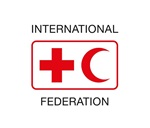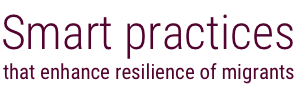Wi-Fi and charging stations to provide migrants with the infrastructure to fully utilize the functionality of their smartphones.
Net Hope worked with Cisco’s Tactical Operations team and volunteer Disaster Response Team (DRT) and Google to install Meraki-based Wi-Fi networks and device charging stations at more than 17 sites along the migration trail in Southern and Central Europe. Net Hope is also providing connectivity kits for non-profits working along the migration trails to assist migrants with mobile connectivity and recharging.
Additionally, National Societies have set up charging stations in several camps across Europe. For example, there are five charging stations on the island of Lesbos with a capacity to charge at least 10 phones each. As an added benefit, while people wait to charge their phones, they are exposed to Red Cross Red Crescent information material and audio. Some of the charging stations also have Wi-Fi available.
The ICRC is implementing the ‘Mobile Solar Kiosk’ project in Rwandan camps to help migrants in camps charge their phones. Many migrants in camps own phones but cannot use them due to lack of access to the Rwandan mobile network, no airtime/credit, and no access to electricity to charge their phones. A solar kiosk that allows 20 phones to be charged at any given time has been set up in the camp; the kiosk charges 60 phones per day on average. The International Rescue Committee has used a similar initiative in Iraq, Lebanon and Syria where it handed out thousands of solar powered chargers to migrants. To address the connectivity needs of migrants, the Civil Society and Technology Project sent ‘human Wi-Fi beacons’ into areas where migrants were located. These are volunteers equipped with hotspot-emitting backpacks.
Specific metrics do not exist but there were several hundred people around charging stations daily.
Design. [P1] Focuses on immediate informational needs of migrants.
Implementation. [P6] Several partners work along trails to provide this support. [P7] Provides connectivity along migratory trails.
Programmes. [P9] Directly responds to displacement of migrants into Europe.
- The dynamic nature of migration means that some Wi-Fi stations may be placed on trails that are no longer used.
- Setting up free Wi-Fi spots to support several thousand people per day is costly.
- Some camps control what can be set up and limit Wi-Fi and charging stations.
- Stations need to be protected against the rain.
- Stations are natural gathering places and can be used for information dissemination to migrants.
- Smaller Wi-Fi facilities are needed for mobile services.
Smart practices
Smart practices report and database survey
About the report
People migrate in pursuit of a better life for themselves and their families. As described in the International Federation of Red Cross and Red Crescent Societies’ (IFRC) Policy on Migration, “migrants are persons who leave or flee their habitual residence to go to new places – usually abroad – to seek opportunities or safer and better prospects.
Read more
About the International Federation

